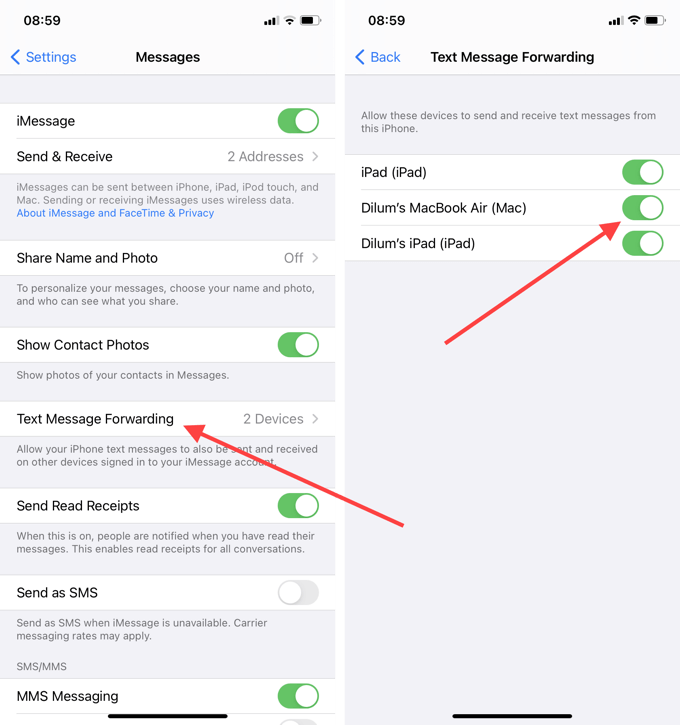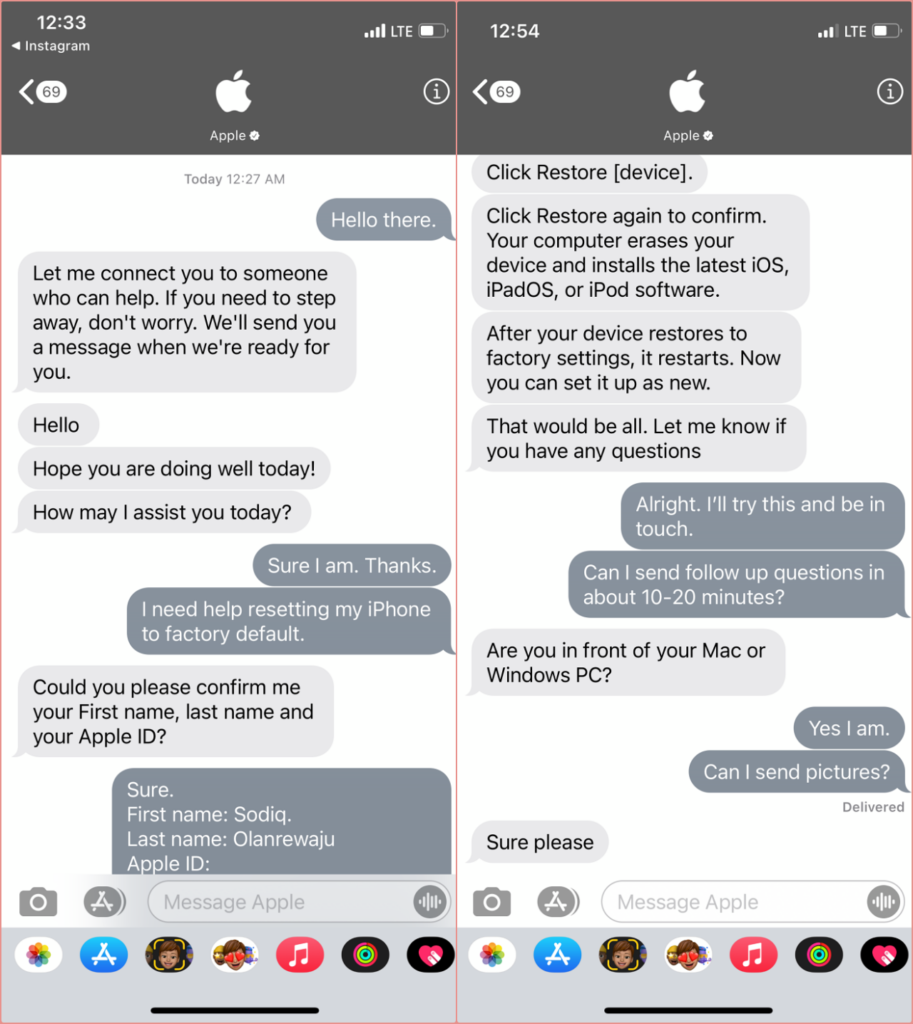
/001-How-to-get-text-messages-on-mac-4685314-e772a322e7d7424b8764d928084de7ab.jpg)
Issues with in-app message display are more present when the device is using cellularĭata. Your application’s behavior during background push handling (e.g., keychain access). You should take limited permissions into consideration when defining
#Messages for mac troubleshooting full
When a background push is received the device may not be in a state where yourĪpplication has full permissions (such as a PIN locked device). Permissions during background push callbacks The notification will still be displayed if it contains either an alert, badge, Usually happens if you send too many content-available pushes in a short period of time. Notification is received in order to maximize the devices battery life.

Background time is not guaranteedĪpple reserves the right to not wake up your application when a background Is in a “not-running” state, run and stop the application from Xcode or restart the device. If you need to test for cases where the application Notifications that are “silent”Ĭontent-available pushes will trigger an application’s notification delegate callbacks again If the notificationĬontains an alert, the alert will still be shown. Killing the application (swipe up from task list) prevents the application fromīeing launched when a background notification is received.

Otherwise when integrating manually you must directly add the AirshipAutomation framework to your project. Similarly in SPM you must add either the umbrella Airship library or the AirshipAutomation library. In CocoaPods this must be integrated by adding either the umbrella Airship pod or Airship/Automation pod to your Podfile. In-app messaging requires the AirshipAutomation module. Steps above should also be considered for missing in-app messages. In-app messaging requires a content-available push notification. We list several possible causes for this behavior, along with strategies Will rarely be present in a production scenario, but it can occur during demoing or testing Under certain circumstances, in-app messages will not be received by devices. Keeping the device on USB power will maintain the connection. (i.e., A persistent connection is not maintained.) WiFi only will switch to polling the Apple Push Notification serviceĮvery 15 minutes when the display turns off and the device sleeps toĬonserve power. However, if cellular is notĪvailable, a slightly different strategy is used. Maintain a persistent connection to the device. Given the choice between WiFi and cellular, APNs will prefer to use cellular and WiFi is being used for push notifications Provided by employers with restrictive default-deny outbound firewall (client-side) network restricts access to this port, push notificationĭelivery will fail.This problem is most commonly observed on WiFi IOS devices connect to the APNs service on TCP port 5223. Off-line, only the latest one would be delivered. If several notifications were sent while the device was Depending on networkĬonditions, apsd can take a while to retry and reestablishĬonnectivity. If this daemon loses itsĬonnection, it will reconnect… eventually. Maintains the connection to Apple’s servers. This strategy saves power by avoiding polling, allowing the Under ideal circumstances, APNs will maintain a persistent connection toĮach device. Handling notifications for more information.
#Messages for mac troubleshooting update
Once you verified everything is being sent, youĬan then update the application to handle notifications in the foreground. To verify a notification being received is to simply background the applicationīefore sending the notification. APNs by default will not show the notification. When a notification is received in the foreground it is up to the application to Once enabledĪnd permissions are accepted, the application is then able to display user notifications.įor more details on enabling notifications, see iOS Platform Guide. This is controlledīy the userPushNotificationsEnabled flag on the UAPush instance. User notifications enabled?īefore remote-notifications are able to post any content to the user’s notificationsĬenter, it must first prompt the user for permission to do so. Is enabled and push notifications are turned on. Verify in your target’s capabilities that remote-notifications background mode

Remote notifications are not supported on a simulator. If automaticSetupEnabled is disabled, verify all the proper methods are beingĪirship SDK. Verify the SDK is set up properly by following iOS SDK Setup Guide,ĭouble check app credentials in the airship config match the credentials in the dashboard, and This troubleshooting guide will walk through common iOS issues.


 0 kommentar(er)
0 kommentar(er)
